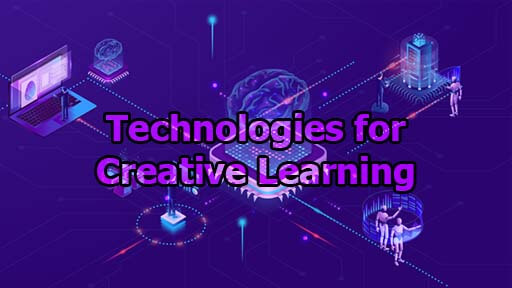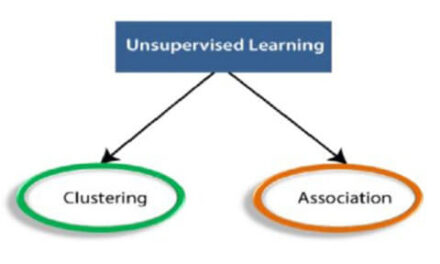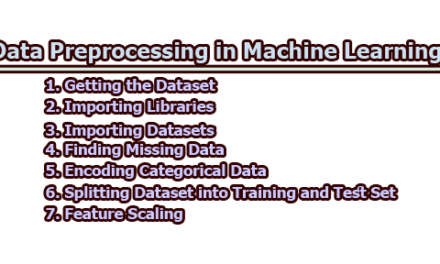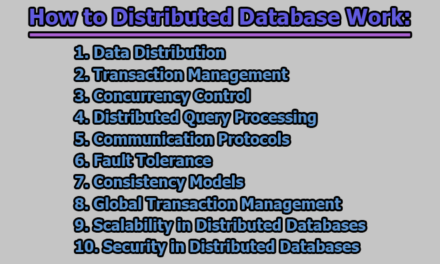Technologies for Creative Learning:
Technologies for creative learning have emerged as powerful tools to enhance education and foster creativity among students. In today’s rapidly evolving world, creativity is a vital skill that prepares students to tackle complex challenges, think critically, and innovate. By integrating digital tools, virtual reality, gamification, coding, robotics, and artificial intelligence into educational settings, educators can create engaging and dynamic learning environments that inspire imagination, promote problem-solving, and encourage collaboration. These technologies provide students with opportunities to express their creativity, explore their ideas, and develop the skills necessary for success in the 21st century. Through the effective integration of technologies for creative learning, education can empower students to become innovative thinkers, lifelong learners, and active contributors to a rapidly changing world. In the rest of this, we are going to explore the various technologies that promote creative learning and their impact on educational outcomes.
The Concept of Creative Learning:
Definition and Importance: Creative learning refers to an educational approach that emphasizes the development of creativity, imagination, and innovative thinking among students. It goes beyond traditional rote memorization and focuses on nurturing students’ abilities to generate ideas, solve problems, and express themselves through various mediums. Creative learning encourages students to explore, experiment, take risks, and collaborate with others, fostering a mindset of curiosity and innovation.
Creative learning is important because it equips students with the skills and competencies necessary for success in the 21st century. In a rapidly changing world, creativity is valued across diverse fields such as science, technology, arts, entrepreneurship, and more. It enables individuals to think critically, adapt to new situations, and come up with novel solutions to complex problems. Moreover, creative learning promotes engagement, motivation, and a love for learning, creating a positive and enriching educational experience.
Characteristics of Creative Learning: Several characteristics define creative learning:
a) Imagination and Originality: Creative learning encourages students to think outside the box, explore unconventional ideas, and develop unique perspectives.
b) Problem-solving and Critical Thinking: It promotes the development of analytical and logical reasoning skills, enabling students to identify and tackle challenges effectively.
c) Expressive Communication: Creative learning encourages students to express their thoughts, emotions, and ideas through various mediums, such as writing, art, music, or digital media.
d) Collaboration and Teamwork: It fosters collaboration, communication, and empathy, allowing students to work together, share ideas, and learn from one another.
e) Reflection and Iteration: Creative learning involves a process of reflection, self-assessment, and continuous improvement, enabling students to refine their ideas and creations over time.
Benefits of Creative Learning in Education: Creative learning offers numerous benefits for students and their educational journey:
a) Enhanced Critical Thinking and Problem-solving Skills: Creative learning cultivates students’ ability to analyze situations, think critically, and generate innovative solutions to real-world problems.
b) Improved Self-expression and Communication: Creative learning provides students with platforms to express their thoughts, emotions, and ideas confidently, fostering effective communication skills.
c) Increased Motivation and Engagement: By incorporating creative activities, students become more engaged and motivated in their learning, leading to improved academic performance.
d) Promoted Innovation and Entrepreneurship: Creative learning nurtures an entrepreneurial mindset, inspiring students to develop new ideas, take risks, and explore opportunities for innovation.
e) Development of Social and Emotional Skills: Creative learning encourages collaboration, empathy, and self-confidence, enabling students to interact positively with others and navigate social challenges.
f) Preparation for the Future: Creative learning equips students with skills and competencies needed in the digital age, such as adaptability, creativity, and technological literacy.
Digital Tools for Creative Learning:
Overview of Digital Tools: Digital tools encompass a wide range of software applications, platforms, and resources that support creative learning. These tools provide students with opportunities to create, collaborate, and communicate their ideas using various digital mediums. From multimedia creation and editing tools to collaborative platforms and assessment tools, digital tools offer versatile opportunities for students to engage in creative learning experiences.
Multimedia Creation and Editing Tools: Multimedia creation and editing tools enable students to produce and edit various forms of digital content, such as images, videos, animations, and music. These tools empower students to express their creativity, communicate their ideas effectively, and develop skills in visual and media literacy. Examples of multimedia creation and editing tools include Adobe Creative Suite (e.g., Photoshop, Premiere Pro, After Effects), Canva, iMovie, and GarageBand.
Collaborative Platforms and Tools: Collaborative platforms and tools facilitate teamwork, communication, and co-creation among students. These tools enable students to work together on projects, share ideas, provide feedback, and engage in meaningful collaboration. Examples of collaborative platforms and tools include Google Workspace (Google Docs, Google Slides, Google Sheets), Microsoft Office 365, Padlet, and Trello.
Digital Storytelling Tools: Digital storytelling tools provide students with platforms to create and share narratives using various multimedia elements. These tools enhance students’ storytelling skills, creativity, and digital literacy. Students can incorporate images, videos, audio, and text to develop engaging and immersive stories. Examples of digital storytelling tools include Storybird, Book Creator, Adobe Spark, and Scratch.
Assessment and Feedback Tools: Assessment and feedback tools offer innovative ways to evaluate student work and provide timely feedback. These tools promote formative assessment practices, allowing students to receive constructive feedback that supports their creative growth. Examples of assessment and feedback tools include online quizzes and surveys (e.g., Kahoot, Quizlet, Google Forms), peer review platforms (e.g., Peergrade, Feedback Fruits), and rubric-based assessment tools.
Examples of Successful Integration: Successful integration of digital tools for creative learning can be seen in various educational contexts. For instance, teachers can incorporate multimedia creation tools to enable students to produce videos, presentations, or digital artwork to showcase their understanding of a topic. Collaborative platforms can be used to facilitate group projects, where students collaborate virtually on shared documents and presentations. Digital storytelling tools can be employed to enhance language arts lessons by allowing students to create and share their own stories using multimedia elements. Assessment and feedback tools can provide real-time feedback and track student progress, allowing teachers to tailor instruction and provide targeted support.
Virtual Reality and Augmented Reality in Creative Learning:
Understanding Virtual Reality (VR) and Augmented Reality (AR): Virtual Reality (VR) and Augmented Reality (AR) are immersive technologies that offer unique opportunities for creative learning. VR creates a computer-generated, three-dimensional environment that users can explore and interact with using specialized headsets or devices. AR, on the other hand, overlays digital content onto the real world, enhancing the user’s perception of the environment through smartphones, tablets, or wearable devices.
Applications of VR and AR in Education: VR and AR have various applications in education, particularly in fostering creative learning experiences. In fields such as art, design, and architecture, VR allows students to visualize and manipulate three-dimensional objects, spaces, and artworks, promoting spatial reasoning and design thinking. AR can bring static images, textbooks, or physical objects to life, providing interactive and engaging learning experiences. Both VR and AR can be used to simulate real-world scenarios, allowing students to practice skills in a safe and controlled environment.
Benefits and Challenges of VR and AR in Creative Learning: The use of VR and AR in creative learning offers several benefits. These immersive technologies provide students with a sense of presence and embodiment, enhancing their engagement and deepening their understanding of abstract concepts. VR and AR foster creativity by allowing students to experiment, iterate, and visualize their ideas in a virtual or augmented space. They also provide opportunities for collaboration, as students can explore and create together in shared virtual or augmented environments.
However, there are also challenges associated with VR and AR implementation. Cost and accessibility can be barriers, as acquiring the necessary hardware and software can be expensive, limiting access for some schools or students. Technical constraints, such as the need for reliable internet connections or the requirement of specialized equipment, may also pose challenges. Additionally, the potential for sensory overload or motion sickness in some individuals should be considered when designing and implementing VR experiences.
Examples of VR and AR in Practice: VR and AR have been successfully integrated into creative learning environments. For example, art students can use VR to virtually visit famous museums and art galleries, experiencing artworks in an immersive way. Architecture students can use AR to overlay virtual models onto real-world structures, allowing them to visualize and refine their designs. Science students can explore virtual environments to understand complex concepts, such as molecular structures or astronomical phenomena.
One notable example is Google’s Expeditions, which uses VR to take students on virtual field trips to various locations around the world. Another example is the Merge Cube, an AR-enabled cube that allows students to interact with digital content, such as virtual objects or simulations, by holding the cube in their hands. These examples demonstrate the potential of VR and AR in creating engaging and immersive learning experiences.
Gamification in Creative Learning:
Gamification: Concept and Frameworks: Gamification is the application of game elements and mechanics to non-game contexts, such as education, to enhance engagement and motivation. It involves incorporating elements like challenges, rewards, leaderboards, and progress tracking to create a game-like experience in learning activities. Gamification frameworks, such as points, badges, and levels, provide structure and a sense of achievement for students as they progress through the learning process.
Benefits of Gamification in Education: Gamification has several benefits in promoting creative learning. It increases student engagement and motivation by making learning enjoyable and immersive. By introducing elements of competition and collaboration, gamification fosters a sense of achievement and encourages students to strive for improvement. It also provides immediate feedback, allowing students to track their progress and make adjustments. Gamification can also promote creativity by encouraging students to think innovatively to overcome challenges presented within the game-like context.
Designing Gamified Learning Experiences: Designing effective gamified learning experiences requires careful consideration of the learning objectives, target audience, and appropriate game elements. Educators need to align game mechanics with the desired learning outcomes to ensure meaningful integration. They should provide clear instructions, set challenging yet attainable goals, and create opportunities for feedback and reflection. Furthermore, incorporating narrative elements and storytelling techniques can enhance immersion and engagement in gamified learning experiences.
Challenges and Considerations: Implementing gamification in education comes with its challenges. It is crucial to strike a balance between intrinsic and extrinsic motivation, as excessive reliance on rewards and badges can undermine intrinsic motivation in the long term. Designing effective and meaningful game elements requires careful thought and planning. Additionally, educators should consider individual differences in student preferences and learning styles when implementing gamified learning experiences.
Case Studies on Gamification in Education: Numerous case studies demonstrate the successful implementation of gamification in creative learning. For instance, Minecraft Education Edition offers a gamified learning environment where students can explore and create in a virtual world. Classcraft is a platform that gamifies the classroom experience by providing a role-playing game-like setting, where students work together and earn points for positive behaviors. These examples highlight the potential of gamification in promoting creative thinking, collaboration, and engagement in educational settings.
Coding and Robotics for Creative Learning:
Introduction to Coding and Robotics: Coding and robotics education involve teaching students how to write code and program robots or other interactive devices. It promotes computational thinking, problem-solving, and logical reasoning skills. Coding allows students to give instructions to computers or robots, enabling them to create interactive digital projects or control physical objects in the real world.
Benefits of Coding and Robotics Education: Coding and robotics education offer numerous benefits for creative learning. It enhances students’ computational thinking abilities, as they learn to break down complex problems into smaller, manageable steps. It also fosters creativity by empowering students to design and develop their own projects, games, and interactive media. Coding and robotics education promotes collaboration, as students often work in teams to solve problems and accomplish tasks. Moreover, it prepares students for future careers in fields such as software development, engineering, and technology.
Integrating Coding and Robotics into the Curriculum: Integrating coding and robotics into the curriculum requires thoughtful planning and consideration. Educators can incorporate coding activities in subjects such as mathematics, science, art, and language arts, allowing students to apply coding skills to solve domain-specific problems. Robotics can be integrated into STEM (Science, Technology, Engineering, and Mathematics) programs or maker spaces, providing hands-on experiences and opportunities for design thinking. It is essential to select appropriate coding languages, platforms, and robotics kits that align with the curriculum goals and students’ age and skill levels.
Challenges and Best Practices: Implementing coding and robotics education may present challenges, such as limited access to resources, technical difficulties, and the need for ongoing professional development for educators. It is important to provide equitable access to coding and robotics tools, considering factors such as affordability, availability, and inclusivity. Educators should also create a supportive and inclusive learning environment, promoting a growth mindset and embracing failure as an opportunity for learning. Collaboration, inquiry-based learning, and project-based assessments are effective strategies for engaging students in coding and robotics education.
Case Studies on Coding and Robotics in Education: Several case studies highlight the successful integration of coding and robotics in creative learning. For example, the Scratch programming language developed by MIT enables students to create interactive stories, animations, and games. LEGO Education provides robotics kits, such as LEGO Mindstorms, that allow students to build and program robots to solve challenges. These examples demonstrate how coding and robotics can enhance students’ creativity, problem-solving skills, and computational thinking.
Artificial Intelligence (AI) and Machine Learning (ML) in Creative Learning:
Overview of AI and ML in Education: Artificial Intelligence (AI) and Machine Learning (ML) technologies have the potential to transform creative learning experiences. AI refers to the development of computer systems that can perform tasks that would typically require human intelligence, such as speech recognition or decision-making. ML is a subset of AI that focuses on algorithms and statistical models that allow computers to learn and improve from data without being explicitly programmed.
AI-Enhanced Learning Environments: AI can enhance learning environments by providing personalized and adaptive experiences to students. Intelligent tutoring systems can tailor instruction based on individual learner needs, providing targeted feedback and adapting the pace and difficulty level of learning activities. AI can also analyze large datasets to identify patterns and trends, enabling educators to gain insights into student performance and make data-driven decisions.
Personalized Learning with AI: AI enables personalized learning experiences by adapting content, resources, and assessments to meet the unique needs of each student. AI-powered adaptive learning platforms can analyze student progress, identify knowledge gaps, and suggest appropriate learning materials or activities. Personalized feedback and recommendations based on individual learning styles and preferences can enhance engagement and support creative learning.
Ethical Considerations and Challenges: The integration of AI and ML in creative learning raises ethical considerations and challenges. Data privacy and security must be safeguarded to protect sensitive student information. Bias in AI algorithms and decision-making processes should be addressed to ensure equitable and inclusive learning experiences. Educators must also consider the ethical implications of relying on AI for assessment and decision-making, such as the transparency and explainability of AI-generated results.
Examples of AI and ML in Education: AI and ML technologies are being utilized in various educational contexts. For example, adaptive learning platforms like Khan Academy and Duolingo use AI algorithms to personalize instruction based on student performance and learning patterns. AI chatbots, such as IBM Watson, provide virtual assistants that can answer student questions and provide support. These examples demonstrate the potential of AI and ML in enhancing creative learning experiences through personalized and adaptive approaches.
The Role of Educators in Integrating Technologies for Creative Learning:
Shifting Roles of Educators: The integration of technologies for creative learning requires educators to embrace new roles and responsibilities. They become facilitators, guiding and supporting students in their creative exploration. Educators need to foster a learner-centered environment that promotes collaboration, critical thinking, and problem-solving. They should also serve as mentors, providing feedback, and encouraging students to take risks, experiment, and reflect on their creative processes.
Professional Development for Educators: Educators require ongoing professional development to effectively integrate creative learning technologies. Training programs and workshops should be provided to enhance their technological skills, pedagogical strategies, and understanding of how to integrate technology in a purposeful and meaningful way. Professional learning communities and networking opportunities can also support educators in sharing best practices and collaborating with peers.
Creating a Supportive Environment: Creating a supportive environment is crucial for the successful integration of technologies for creative learning. This includes providing access to necessary technology resources, ensuring reliable technical support, and addressing infrastructure and connectivity issues. Educators should also foster a culture of experimentation, where students feel comfortable taking risks, exploring new ideas, and learning from failures. Collaboration and teamwork should be encouraged to promote shared learning experiences.
Addressing Equity and Accessibility: Equity and accessibility should be prioritized when integrating technologies for creative learning. It is essential to ensure that all students have equal access to technology tools and resources, regardless of their socioeconomic background or geographic location. Considerations should be made to accommodate diverse learners, including those with disabilities or limited English proficiency. Providing alternative means of access and differentiated instruction can support inclusivity in creative learning environments.
Collaboration and Networking: Collaboration and networking play a vital role in integrating technologies for creative learning. Educators should engage in professional networks, both online and offline, to connect with colleagues, share experiences, and access a wide range of resources and ideas. Collaboration with other subject-area teachers, technology specialists, and experts in creative fields can lead to interdisciplinary projects and authentic learning experiences for students.
Ethical Considerations in Creative Learning Technologies:
Data Privacy and Security: When integrating creative learning technologies, ensuring data privacy and security is of utmost importance. Educators and educational institutions should comply with relevant data protection laws and regulations. They should use secure platforms and tools that prioritize data encryption and protection. Educators must also educate students about responsible data sharing and digital citizenship to promote safe and ethical use of technology.
Equity and Inclusion: Equity and inclusion should be at the forefront of creative learning technologies. Efforts should be made to bridge the digital divide and provide equal access to technology tools and resources for all students. Educators should be mindful of potential biases in technology and strive to create inclusive learning environments that cater to the needs of diverse learners. Consideration should be given to language accessibility, cultural sensitivity, and accommodating different learning styles.
Digital Citizenship and Ethics: Educators should promote digital citizenship and the ethical use of technology in creative learning environments. This includes teaching students about responsible online behavior, respecting intellectual property rights, and understanding the ethical implications of technology use. Students should be encouraged to critically evaluate information sources, engage in respectful online communication, and consider the impact of their digital footprint.
Balancing Screen Time and Real-world Experiences: While technology plays a valuable role in creative learning, it is essential to strike a balance between screen time and real-world experiences. Educators should encourage a holistic approach to learning that incorporates hands-on activities, outdoor exploration, and face-to-face interactions. Providing opportunities for students to reflect on their technology use and engage in activities that promote physical movement and social interaction can contribute to a healthy and well-rounded creative learning experience.
Responsible Use of AI and Automation: As AI and automation technologies become more prevalent in creative learning, responsible use becomes crucial. Educators should guide students in understanding the limitations and potential biases of AI systems. They should foster critical thinking skills to evaluate AI-generated content and encourage students to question, analyze, and challenge automated processes. Educators should also emphasize the importance of human creativity, empathy, and ethical decision-making in an increasingly automated world.
Future Directions:
Emerging Technologies and Innovations: As technology continues to advance at a rapid pace, new tools and innovations are emerging that have the potential to further enhance creative learning. Some of these include artificial reality (AR), holographic displays, wearable devices, brain-computer interfaces, and 3D printing. These technologies offer exciting opportunities for immersive and hands-on learning experiences, enabling students to explore and create in ways previously unimaginable. As educators and researchers continue to explore the potential of these technologies, it is crucial to keep an eye on emerging trends and adapt teaching methodologies accordingly.
Collaborative Learning and Global Connections: Technologies for creative learning also open up possibilities for collaboration and global connections. With the rise of online platforms, students can engage in collaborative projects with peers from different geographical locations, sharing ideas, perspectives, and cultures. This fosters a sense of global citizenship and broadens students’ horizons. Additionally, technologies like video conferencing, virtual classrooms, and social media enable educators to bring experts and guest speakers from around the world into the classroom, enriching the learning experience and providing real-world insights.
Assessing Creativity and Learning Outcomes: While technology can undoubtedly enhance creativity and innovation, assessing these skills can be challenging. Traditional assessment methods often focus on quantifiable outcomes, such as standardized tests and grades, which may not adequately capture the multifaceted nature of creative learning. As technology integrates into the learning process, it is essential to develop new assessment approaches that can effectively evaluate creativity, critical thinking, problem-solving, and collaboration. These may include performance-based assessments, portfolios, self-reflection exercises, and peer evaluations. Ongoing research and collaboration between educators and assessment experts are crucial to refining and implementing effective assessment strategies.
Teacher-Student Partnerships and Empowerment: To fully harness the potential of technologies for creative learning, it is vital to foster teacher-student partnerships and empower students as active participants in their learning journeys. Educators should encourage students to explore and experiment with technology, providing them with opportunities to express their creativity, take ownership of their learning, and solve real-world problems. By nurturing student agency and autonomy, educators can cultivate a generation of self-directed learners who are prepared to thrive in an ever-evolving technological landscape.
In conclusion, technologies for creative learning offer immense potential to transform education and provide students with engaging and meaningful learning experiences. From virtual reality and augmented reality to gamification, coding and robotics, AI, and ML, these technologies foster creativity, collaboration, and critical thinking skills. However, their successful integration requires careful consideration of ethical considerations, professional development for educators, and addressing issues of equity and accessibility. By embracing these technologies and harnessing their power, educators can create innovative and inclusive learning environments that empower students to become creative thinkers and lifelong learners.
FAQs:
What is the role of technology in creative learning?
Technology plays a significant role in creative learning by providing tools, platforms, and resources that enable students to express their creativity, think critically, solve problems, and collaborate with others. It offers a wide range of digital tools, virtual reality experiences, gamification elements, coding and robotics platforms, and artificial intelligence systems that support and enhance creative learning activities. Technology empowers students to explore their ideas, engage in hands-on experiences, and interact with content in innovative ways, fostering a culture of imagination, innovation, and artistic expression.
How can digital tools enhance creative learning?
Digital tools offer numerous ways to enhance creative learning. They enable students to create and edit multimedia content such as images, videos, animations, and music, allowing them to communicate their ideas effectively. Collaborative platforms and tools facilitate teamwork and cooperation, providing opportunities for students to work together on projects, share ideas, and provide feedback. Digital storytelling tools encourage students to develop narratives and express their creativity through various media. Assessment and feedback tools offer innovative ways to evaluate student work, providing timely and constructive feedback to support their creative growth.
How does virtual reality contribute to creative learning?
Virtual reality (VR) provides immersive experiences that can enhance creative learning. It transports students to virtual environments, allowing them to explore and interact with simulated worlds. In creative learning, VR enables students to visualize and create three-dimensional objects and environments, promoting spatial reasoning, design thinking, and artistic expression. It offers a unique platform for students to engage in experiential learning, where they can apply their knowledge and skills in realistic and simulated scenarios. VR stimulates imagination, engages multiple senses, and promotes active exploration, leading to deeper learning and creative problem-solving.
What is the impact of gamification on creative learning?
Gamification integrates game elements and mechanics into educational activities to enhance motivation and engagement. In creative learning, gamification can have a positive impact by making learning more enjoyable and interactive. It fosters a growth mindset, encouraging students to view challenges as opportunities for growth and improvement. Gamified experiences provide a sense of autonomy, mastery, and purpose, as students set goals, earn rewards, and progress through levels or stages. By incorporating elements such as challenges, competition, and collaboration, gamification promotes creativity, critical thinking, and problem-solving skills among students.
How do coding and robotics support creative learning?
Coding and robotics empower students to become creators of technology, fostering creative learning. Coding teaches computational thinking, logical reasoning, and problem-solving skills. Students can develop interactive stories, games, animations, and applications, promoting creativity and innovation. Robotics combines coding with hands-on building and engineering, enabling students to design and construct robots that can perform various tasks. Robotics challenges students to solve real-world problems, encouraging creative thinking and design solutions using mechanical and electrical components. Coding and robotics provide opportunities for students to apply their creativity in practical, tangible ways.
How does artificial intelligence contribute to creative learning?
Artificial intelligence (AI) offers various ways to enhance creative learning. AI-enhanced learning environments can personalize the learning experience, adapting content and challenges based on student’s individual needs and preferences. Personalization promotes creative thinking and problem-solving by tailoring activities to match each student’s unique interests and abilities. AI-powered intelligent tutoring systems provide personalized feedback, guidance, and support to students. AI can also generate creative content, such as art or music, inspiring and expanding students’ creative capabilities. Overall, AI contributes to creative learning by providing personalized experiences and generating new possibilities for creative expression.
What are the ethical considerations in technologies for creative learning?
Ethical considerations in technologies for creative learning include data privacy and security, equity and inclusion, digital citizenship and ethics, balancing screen time, and addressing AI-related ethical issues. It is crucial to protect student’s personal information and ensure responsible data handling practices. Equity and inclusion should be addressed to ensure that all students have equal access to technology and opportunities for creative learning. Digital citizenship and ethics education should emphasize responsible and ethical use of technology, including copyright and attribution. Balancing screen time with real-world experiences is important for maintaining a healthy and balanced approach to learning. Finally, ethical considerations surrounding AI, such as bias in algorithms or ethical decision-making by AI systems, should be carefully examined and addressed to ensure the responsible use of AI technologies in creative learning contexts.
What is the role of educators in integrating technologies for creative learning?
Educators play a vital role in integrating technologies for creative learning. They need to be knowledgeable about the available tools, platforms, and resources and understand how to integrate them effectively into the curriculum. Educators should provide guidance and support to students as they navigate through the creative process, fostering a growth mindset and resilience. They create a supportive environment that encourages risk-taking, experimentation, and reflection. Professional development programs can equip educators with the necessary skills and knowledge to use these technologies effectively. Additionally, educators should address ethical considerations, promote equitable access, and ensure that technologies are used responsibly and ethically in creative learning contexts.
References:
- Beghetto, R. A., & Kaufman, J. C. (2007). Toward a broader conception of creativity: A case for “mini-c” creativity. Psychology of Aesthetics, Creativity, and the Arts, 1(2), 73-79.
- Craft, A. (2003). The limits to creativity in education: Dilemmas for the educator. British Journal of Educational Studies, 51(2), 113-127.
- Cropley, A. J. (2006). In praise of convergent thinking. Creativity Research Journal, 18(3), 391-404.
- Eisenberg, M. (2006). Creative teaching for tomorrow: Fostering a creative state of mind in the classroom. International Journal of Learning and Media, 1(1), 35-48.
- Lai, K. W., Khaddage, F., & Knezek, G. (2013). Blending student creativity and digital technologies: A proposed model for new learning. Educational Technology & Society, 16(3), 356-367.
- Papert, S. (1980). Mindstorms: Children, computers, and powerful ideas. Basic Books.
- Resnick, M. (2007). All I really need to know (about creative thinking) I learned (by studying how children learn) in kindergarten. ACM SIGCHI Bulletin, 39(1), 11-14.
- Sawyer, R. K. (2012). Explaining creativity: The science of human innovation. Oxford University Press.
- Sternberg, R. J. (2003). Wisdom, intelligence, and creativity are synthesized. Cambridge University Press.
- (2013). Creative economy report 2013: Widening local development pathways. United Nations Development Programme.
- Voogt, J., & Pareja Roblin, N. (2010). 21st-century skills: Discussing their place in education. In J. Voogt & G. Knezek (Eds.), International Handbook of Information Technology in Primary and Secondary Education (pp. 3-14). Springer.
- Wiggins, G. (2012). Seven keys to effective feedback. Educational Leadership, 70(1), 10-16.
- Zhao, Y. (2012). World-class learners: Educating creative and entrepreneurial students. Corwin.

Former Student at Rajshahi University










